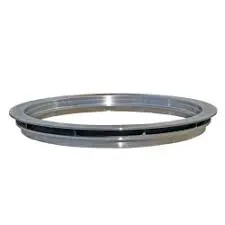- Afrikaans
- Albanian
- Amharic
- Arabic
- Armenian
- Azerbaijani
- Basque
- Belarusian
- Bengali
- Bosnian
- Bulgarian
- Catalan
- Cebuano
- China
- China (Taiwan)
- Corsican
- Croatian
- Czech
- Danish
- Dutch
- English
- Esperanto
- Estonian
- Finnish
- French
- Frisian
- Galician
- Georgian
- German
- Greek
- Gujarati
- Haitian Creole
- hausa
- hawaiian
- Hebrew
- Hindi
- Miao
- Hungarian
- Icelandic
- igbo
- Indonesian
- irish
- Italian
- Japanese
- Javanese
- Kannada
- kazakh
- Khmer
- Rwandese
- Korean
- Kurdish
- Kyrgyz
- Lao
- Latin
- Latvian
- Lithuanian
- Luxembourgish
- Macedonian
- Malgashi
- Malay
- Malayalam
- Maltese
- Maori
- Marathi
- Mongolian
- Myanmar
- Nepali
- Norwegian
- Norwegian
- Occitan
- Pashto
- Persian
- Polish
- Portuguese
- Punjabi
- Romanian
- Russian
- Samoan
- Scottish Gaelic
- Serbian
- Sesotho
- Shona
- Sindhi
- Sinhala
- Slovak
- Slovenian
- Somali
- Spanish
- Sundanese
- Swahili
- Swedish
- Tagalog
- Tajik
- Tamil
- Tatar
- Telugu
- Thai
- Turkish
- Turkmen
- Ukrainian
- Urdu
- Uighur
- Uzbek
- Vietnamese
- Welsh
- Bantu
- Yiddish
- Yoruba
- Zulu
அக் . 05, 2024 23:00 Back to list
dies casting
Understanding Die Casting A Comprehensive Overview
Die casting is a manufacturing process that involves injecting molten metal into a mold cavity under high pressure. This technique is widely used for creating complex shapes and components with high precision and smooth surfaces. Industries such as automotive, aerospace, electronics, and consumer goods have increasingly relied on die casting due to its efficiency and product consistency.
The Die Casting Process
The die casting process begins with the preparation of the mold, which consists of two halves that create the desired shape. These molds can be made from various materials; however, steel is commonly used for its durability and heat resistance. Once the mold is ready, the process follows these key steps
1. Melting the Metal The metal, typically aluminum, zinc, or magnesium, is melted in a furnace until it reaches a liquid state. Each metal has unique properties, making it suitable for different applications. For instance, aluminum is lightweight and resistant to corrosion, while zinc provides excellent dimensional stability.
2. Injection The molten metal is then injected into the mold at a high pressure through a nozzle. The high pressure ensures that the metal fills all intricate details of the mold, allowing for the production of complex geometries. The injection speed and pressure are critical factors that can affect the quality of the final product.
3. Cooling and Solidification After the metal fills the mold, it is allowed to cool and solidify. This cooling process can be aided by water channels incorporated in the mold, which help in efficient heat dissipation. Proper cooling is essential to prevent defects and to achieve the desired mechanical properties of the casting.
4. Ejection Once the metal has cooled and solidified, the mold halves are separated, and the finished part is ejected from the mold. Any excess metal, known as flash, is trimmed off, leaving a smooth, finished product ready for further processing or assembly.
Advantages of Die Casting
The die casting process offers several advantages that make it a preferred choice for manufacturers
dies casting

- High Precision Die casting produces parts with excellent dimensional accuracy and a tight tolerance range. This level of precision reduces the need for secondary machining operations, saving time and costs.
- Complex Shapes The process can create intricate and detailed shapes that may be challenging or impossible to achieve with other manufacturing methods.
- Smooth Surfaces Die-cast products typically have smooth surfaces, which can reduce the need for additional finishing processes, enhancing efficiency in production.
- Material Efficiency Die casting minimizes waste as the process uses most of the molten metal, and any scrap can often be recycled back into the melting process.
- Scalability This method is highly scalable, making it suitable for both small and large production runs. The initial setup cost might be high due to the creation of molds, but the cost per unit decreases significantly with higher volumes.
Applications of Die Casting
Die casting is utilized across various industries. In the automotive sector, it is used for engine blocks, transmission cases, and structural components, contributing to weight reduction and improved fuel efficiency. In the electronics industry, die casting is employed to produce housings and components that require both durability and conductivity. The consumer goods sector also benefits from die-cast products, such as kitchen appliances and furniture fittings, where aesthetics and functionality are crucial.
Conclusion
In summary, die casting is a versatile manufacturing process that plays a vital role in modern production across numerous industries. With its numerous advantages, including precision, efficiency, and the ability to produce complex parts, die casting continues to be a preferred method for manufacturers looking to enhance product quality and streamline production. As technology advances, the die casting process will likely evolve, further expanding its applications and improving its capabilities. With a strong focus on sustainability and resource efficiency, the future of die casting looks promising, ensuring its relevance in a rapidly changing industrial landscape.
-
Custom Furniture Hardware Durable & Affordable Solutions Shop Now
NewsJun.01,2025
-
SRC Concrete Pipe Bottom Ring Durable & Customizable Solutions
NewsJun.01,2025
-
Machine Base Casting Solutions Custom & ODM Precision Castings
NewsMay.31,2025
-
Custom Cast Steel Pipe Mould Pallets Heavy-Duty & Custom Solutions
NewsMay.31,2025
-
Cast Silicon Aluminum Alloy Heat Exchanger Suppliers & Exporters
NewsMay.31,2025
-
Precision Die Casting Services Custom & Machining Parts Supplier
NewsMay.31,2025


